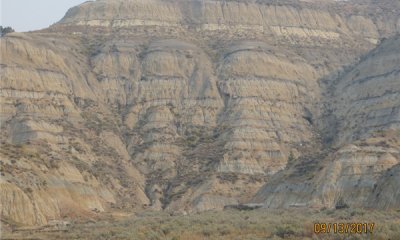
Badland
Scenario model
Current ecosystem state
Select a state
Management practices/drivers
Select a transition or restoration pathway
-
No transition or restoration pathway between the selected states has been described
Target ecosystem state
Select a state
Description
The Escarpment State is supported by empirical data, historical data, local expertise, and photographs. This state consists of exposed, eroding, soft, silty, and clayey bedrock.
This state is defined by one native plant community that is a result of geological erosion, periodic fire, drought, and grazing. These events are part of the natural disturbance regime and climatic process. The Reference Plant Community consists of 80 percent bare ground with a small amount of native vegetation.
Submodel
Description
The Woody State is dominated by a tree and shrub plant community. This state is defined by two plant communities. The increase and spread of shrubs and trees results from an absence of fire.
Special planning will be necessary to assure that sufficient amounts of fine fuel are available to carry fires with enough intensity to control woody species. In some locations the use of chemicals as a brush management tool may be desirable to initiate and accelerate this transition.
Birds, small mammals and livestock are instrumental in the distribution of seed and accelerating the spread of most shrubs common to this site. The speed of encroachment varies considerably.
Submodel
Model keys
Briefcase
Add ecological sites and Major Land Resource Areas to your briefcase by clicking on the briefcase (![]() ) icon wherever it occurs. Drag and drop items to reorder. Cookies are used to store briefcase items between browsing sessions. Because of this, the number of items that can be added to your briefcase is limited, and briefcase items added on one device and browser cannot be accessed from another device or browser. Users who do not wish to place cookies on their devices should not use the briefcase tool. Briefcase cookies serve no other purpose than described here and are deleted whenever browsing history is cleared.
) icon wherever it occurs. Drag and drop items to reorder. Cookies are used to store briefcase items between browsing sessions. Because of this, the number of items that can be added to your briefcase is limited, and briefcase items added on one device and browser cannot be accessed from another device or browser. Users who do not wish to place cookies on their devices should not use the briefcase tool. Briefcase cookies serve no other purpose than described here and are deleted whenever browsing history is cleared.
Ecological sites
Major Land Resource Areas
The Ecosystem Dynamics Interpretive Tool is an information system framework developed by the USDA-ARS Jornada Experimental Range, USDA Natural Resources Conservation Service, and New Mexico State University.
